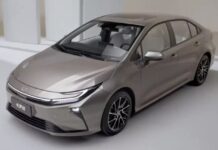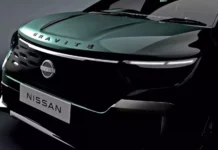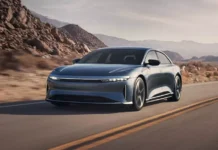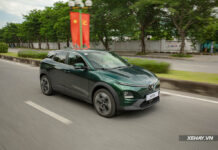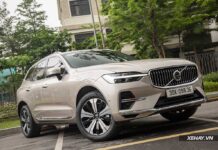Toyota, the renowned Japanese automotive manufacturer, has been steadfast in its multi-pronged approach to emission reduction, encompassing hybrid vehicles, fuel-efficient internal combustion engines, fuel cell electric vehicles, and BEVs. Akio Toyoda, Toyota’s chairman, advocates for a gradual transition from gasoline-powered cars to electric vehicles, tailoring the pace to individual countries’ circumstances and users’ preferences.

Akio Toyoda, Chairman of Toyota (Photo: Christophe Morin/IP3/Getty Images)
In an interview with Automotive News, Akio Toyoda revealed that Toyota has sold approximately 27 million hybrid vehicles since the launch of the first-generation Prius in 1997. He asserted that “9 million electric vehicles emit the same amount of carbon as 27 million hybrid vehicles.” This implies that, according to Toyoda’s statement, one electric vehicle produces pollution equivalent to three hybrid vehicles.
Toyoda also argued that manufacturing 9 million BEVs in Japan would increase emissions due to the country’s heavy reliance on fossil fuels for electricity generation, an argument that critics claim ignores the ongoing shift towards cleaner energy sources.
But is Toyoda’s statement accurate?
Are Electric Vehicles Really “Dirtier”?
The main argument of EV skeptics often revolves around the emissions associated with mining and processing the materials used in battery production, such as lithium, cobalt, and nickel. These processes are water-intensive and pose environmental risks.
As a result, electric vehicles enter the market with a larger carbon footprint compared to gasoline or hybrid vehicles, a concept known as “carbon debt.” A study published in IOP Science reveals that gasoline or hybrid vehicles emit 6-9 tons of CO₂ during production, while electric vehicles emit 11-14 tons of CO₂.
However, that’s only part of the story. As electric vehicles start rolling off the assembly lines, they begin to “repay their carbon debt” and gradually reduce their cumulative emissions. In contrast, gasoline and hybrid vehicles continue to increase their emissions during their operational lifespan.

Tesla Electric Vehicle
A 2023 study by the Argonne National Laboratory in the United States found that an electric vehicle needs to travel approximately 19,000 miles (around 31,000 km) to offset its production emissions, which is less than two years of driving in the US. Another study published in Nature estimated this distance to be around 28,000 miles (approximately 45,000 km). Despite the discrepancy, both studies conclude that electric vehicles are superior in the long run.
Not All Hybrids Are Created Equal
Traditional hybrids like the Toyota Prius have smaller batteries and run on electricity for short distances before switching to gasoline engines. Plug-in hybrids (PHEVs) have larger batteries, can be charged externally, and can travel 18-31 miles (30-50 km) on electricity alone before switching to gasoline power. Consequently, in terms of emissions, hybrids fall between gasoline and electric vehicles.
Some people still believe that “dirty electricity grids mean dirty EVs.” However, this notion is not entirely accurate. According to Ember, a leading energy research organization, 43% of US electricity came from clean sources at the end of 2024. While this percentage varies across states—with West Virginia still relying heavily on coal-fired power, and California and Texas leading in solar and wind energy—the trend toward renewable energy is undeniable.

Toyota Prius Hybrid
In reality, according to the US Department of Energy’s emissions calculator, a Tesla Model Y operating in West Virginia emits less (149 g CO₂/mile) than a Toyota Prius PHEV (177 g CO₂/mile). In California, where the electricity grid is cleaner, the Model Y emits only 80 g CO₂/mile—almost half that of the Prius PHEV (130 g CO₂/mile). This calculation also doesn’t consider that many PHEV owners don’t regularly charge their vehicles.
Optimizing Operations: EVs Take the Lead
Gasoline-powered vehicles not only emit during operation but also generate emissions from oil drilling, hydraulic fracturing, and fuel refining processes. In contrast, internal combustion engines have an efficiency of only 20-40%, with the remainder lost as heat. Electric vehicles, on the other hand, convert over 90% of their electrical energy into wheel motion.
Thanks to these factors, the IOP study found that electric vehicles “break even” with hybrid vehicles in just 2.2-2.4 years of use and with gasoline vehicles in a mere 1.3-1.6 years, depending on the segment.
The study also revealed that out of 2,983 US counties, EVs were the cleanest choice in the majority (2,858) of them; hybrids were a better option in only 125 counties.
Reputable sources such as the MIT Climate Portal and the EPA’s “Misconceptions about EVs” webpage corroborate that EVs are cleaner in most cases.
The Future: Cleaner Batteries, Cleaner Vehicles
Advancements in battery recycling technology are being actively pursued. Companies like Redwood Materials, founded by a former Tesla employee, are working towards a circular economy model to reduce the need for new mineral extraction. Additionally, new battery types, such as LFP (lithium iron phosphate) and LMR (lithium manganese-rich) batteries, are being developed to reduce emissions from manufacturing plants.
Conclusion
Akio Toyoda’s statement may hold true when considering localized data, specific conditions such as “dirty” electricity grids, and specific use cases like slow-speed driving, frequent braking, and energy regeneration. However, on a global scale and with the ongoing transition to renewable energy, electric vehicles are undeniably the cleaner choice—and they are only getting cleaner over time.
This doesn’t diminish the value of hybrid or PHEV vehicles. They remain a reasonable transitional option for those not yet ready to embrace fully electric cars. PHEVs, when fully charged, can meet daily commuting needs with minimal gasoline usage. Moreover, hybrid vehicles still offer superior fuel efficiency compared to their gasoline-only counterparts.
Nevertheless, considering efficiency, emissions, and sustainability, electric vehicles offer the most promising path toward a zero-emissions future.
VinFast Delivers 11,496 Electric Cars in May 2025
VinFast, the leading automotive manufacturer, announced impressive business results for May 2025 in Vietnam. With a remarkable performance, the company delivered 11,496 electric vehicles in the domestic market, bringing the year-to-date sales to an impressive 56,187 units. This showcases VinFast’s strong presence and rapid growth in the Vietnamese market, solidifying its position as a key player in the automotive industry.

